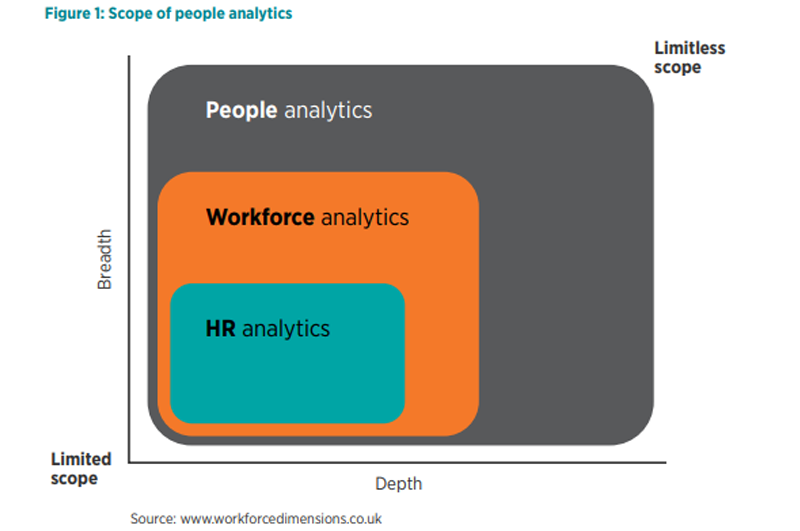Want to Improve Organizational Outcomes? Consider People Analytics
People analytics has been around for more than 20 years. However, it continues to be viewed as an emerging area of study. People analytics shows the contribution that the workforce makes to organizational success and provides insight to maximize that contribution. It is an evidence-based practice that allows human resources (HR) staff to evaluate practice for the purpose of improving outcomes for employees, and to communicate with the workforce the effectiveness of personnel management and HR practice. People data, when used appropriately, may improve trust and transparency within organizations.
There is evidence that organizations are not using the people and workforce data available to them to inform practice and decision-making around workforce. A 2018 survey, People analytics: driving business performance with people data, conducted by the Chartered Institute of Personnel and Development (CIPD), a non-profit organization for HR and people development, in collaboration with Workday, revealed that people analytics is not the norm within organizations, but when used, it increases organizational performance. For example:
- 54% of global respondents had access to people data and analytics.
- 39% of respondents had no access to people data for decision-making purposes.
- 52% of HR practitioners reported that their organization uses people data to address business challenges and, when used, it is seen as valuable to the organizations
- 75% of HR practitioners who reported using people data use it to address workforce performance and productivity issues.
- 65% of respondents who worked in organizations with a strong people analytics culture reported that their business performance was strong when compared with competitors; however, only 32% of those in organizations with a weak analytics culture reported strong performance.
A significant finding from the survey is that using people data leads to good business outcomes. Sounds great, doesn’t it? But how does an organization begin using people data to inform workforce issues and decisions? A recent publication by CIPD, Getting started with people analytics: a practitioners’ guide, provides information about using people data and covers key concepts related to people analytics including:
- Getting started with people analytics
- Using technology and systems to effectively sort and use the data available to HR
- Making and sustaining a high impact analytics practice
- Becoming more evidence-based by relying on people analytics
- Building trust and engagement within the organization by appropriately using data
The CIPD guide shows that analytics doesn’t require sophisticated software and large data sets. It suggests that a clear methodology, analytical skills, and engagement with stakeholders can provide insight into the workforce challenges that may plague an organization. The process can also assist with decision-making to address those challenges.

The Quality Improvement Center for Workforce Development (QIC-WD) created the Child Welfare Workforce Analytics Institute (the Institute) to use workforce analytics (a subset of people analytics as described by CIPD, see Figure 1) to address workforce challenges in a handful of public child welfare agencies. These agencies will participate in a 3-day intensive on-line learning session in August 2020. The QIC-WD will share resources and experiences from the Institute to assist other child welfare agencies in establishing meaningful partnerships between HR and child welfare personnel to use workforce analytics to examine and address common child welfare workforce challenges.